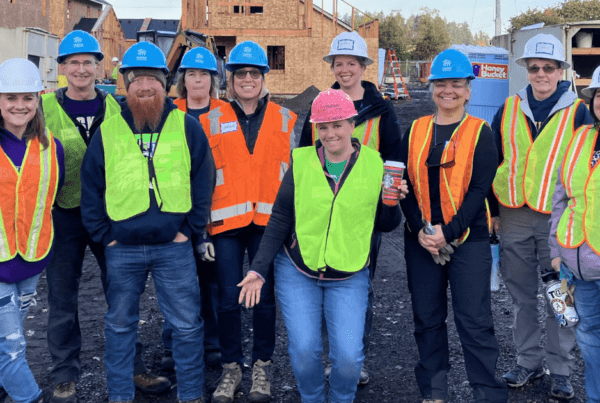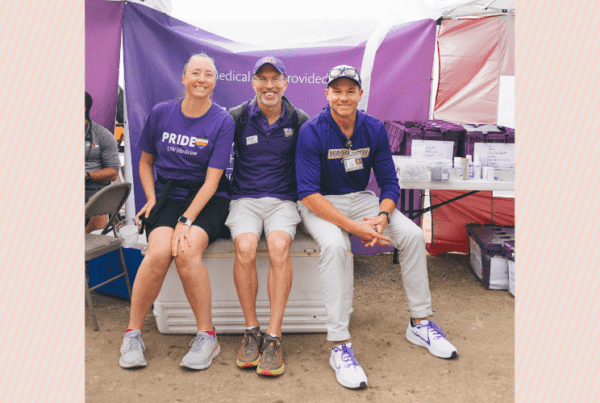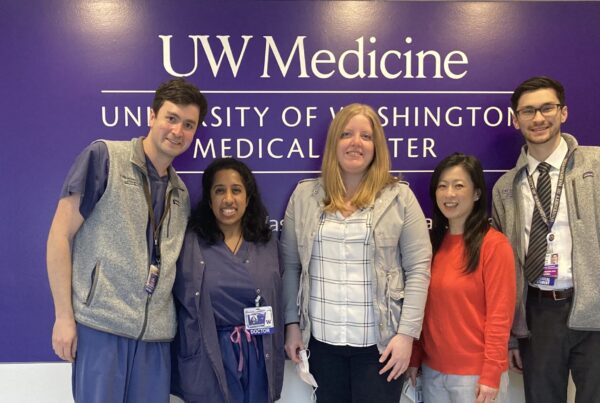Highlights | A pipeline to success
- The Radiology Department’s Build-a-Pipeline subcommittee creates programs for underrepresented students aimed at allowing them to discover radiology careers.
- So far, they have developed a curriculum with local schools and held an immersive weekend experience.
- This summer, they will hold their first paid internship program in collaboration with the Department of Radiation Oncology.
For the past several years, the UW School of Medicine Department of Radiology has been building a robust equity, diversity and inclusion (EDI) program that oversees everything from recruitment and retention to recognition, scholarship and mentorship.
This year, the efforts of the program’s Build-a-Pipeline subcommittee have taken off, resulting in more opportunities for underrepresented high school students to learn about the careers they can pursue in radiology.
“Our goal is to get high school and community college students from underrepresented backgrounds to see fields of medicine they might not know about or have mentorship to help them succeed in,” says Safia Cheeney, MD, an acting assistant professor of Pediatric Radiology and co-chair of the Pipeline subcommittee.
Bringing radiology into the classroom
In 2021, co-chairs Cheeney and Hubert Vesselle, MD, PhD, a radiologist and director of UW Medicine’s Radiology Global Health program, started working with a local organization called Technology Access Foundation (TAF) to bring lessons about medicine and radiology into classrooms.
This winter, Cheeney, Vesselle and colleagues — including Lia Halasz, MD, Kristi Hendrickson, PhD, and Eric Ford, PhD, faculty in the Department of Radiation Oncology — developed a curriculum to show students how radiologists make decisions using scanning tools and how they diagnose patients.
The radiation oncology team showed students how they treat cancer using external radiation. They presented the case of a fictitious patient suffering from lung cancer that had spread to the brain and who was undergoing diagnostic scans and procedures. The team also taught basic concepts of cancer and radiation.
Cheeney, Vesselle and the rest of the team presented about different professions within the field, then held an online career fair that reached 78 students.
The team will continue working in schools for the rest of the year and into 2023. The curriculum was such a success that the EDI team knew they needed to find additional ways to connect with students and foster their interest, Vesselle says.
Immersive weekend experiences
Driven by student interest to learn even more about radiology and healthcare careers, Cheeney and Vesselle set to work to create an immersive weekend program that would allow students to meet more professionals, learn about their work and interact with equipment in real time within the Department of Radiology at UW Medical Center – Montlake.
“What makes the program unique is, a lot of the time programs are designed where a student only shadows one physician, but we want to expose students to lots of healthcare fields: physicists, nurses, X-ray techs, physician assistants, sonographers, business administrators, and more,” Cheeney explains.
The immersion weekend was held in late April 2022 and hosted nine students (seven from TAF, one from Rainier Scholars and one student from the Northshore school system). More than 25 faculty, staff and trainees in radiology volunteered to help.
“It was inspiring to see our department come out and participate. Our chair was there and talked with students. So many people spent their weekend making this awesome [experience] for students,” Cheeney says.
The programs held during the immersion weekend were anything but ordinary. Vesselle created a “detective game” using plastic shoeboxes filled with a Jello and Metamucil mixture to simulate soft tissues. Between two layers of the gelatin mix, he placed small, hidden objects, such as pieces of wood and metal, small balloons inflated with different substances, and even Swedish fish. Students then experimented to see which objects appeared on different scans (CT, plain X-rays and ultrasonography) including using handheld ultrasound scanners linked to a tablet.
“It helped illustrate for the students the relative strengths and weakness of different imaging tools,” Vesselle says.
Christina Brunnquell, PhD, one of Cheeney and Vesselle’s colleagues who helped facilitate the weekend, volunteered to undergo an ultrasound so students could watch live — an amazing experience for them since she was pregnant and the students got to see her baby in utero.
“Students were really engaged and had great questions. It was interesting to see which students liked which fields. For example, one student liked ultrasound even though she hadn’t seen it before,” Cheeney says.
An inaugural summer internship
At the immersion weekend, the doctors noticed several students were serious about going into healthcare careers. They wanted to offer the students mentorship beyond a classroom presentation or an immersive weekend — so they created a summer internship program.
The internship is fully paid and the inaugural program will start in August 2022. Six TAF students who attended the immersion weekend will be summer interns for four weeks, two spent with the radiology team and two with radiation oncology. Beyond the enhanced exposure to healthcare careers, the internship will provide them with individual mentoring and guidance on developing skills for college applications.
The goal is to eventually have one internship program running each summer, as well as two immersion weekends and other teaching pipeline programs in partnership with local schools.
“The most important thing for me is partnering with local organizations that have a mission of empowering underrepresented minority youth. We can develop any curriculum, but that won’t get students in the door; our partnerships do. It’s important not just to show up once and never again, but to develop long-term partnerships and build trust,” Vesselle says.
Photo caption: Students and radiology team members during the recent immersion weekend.


